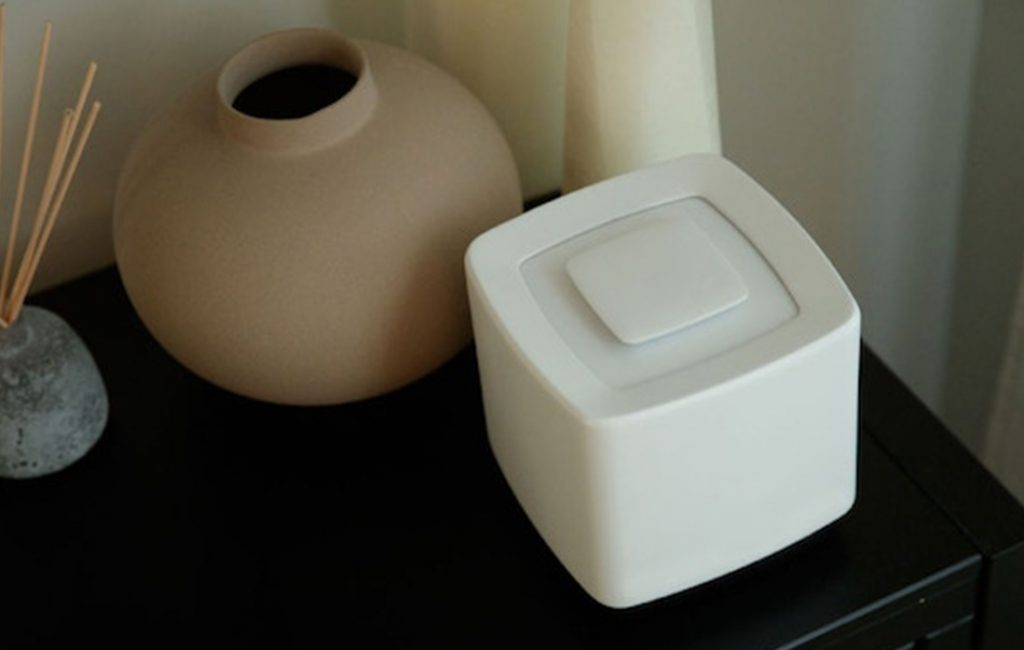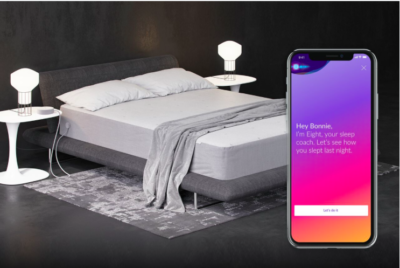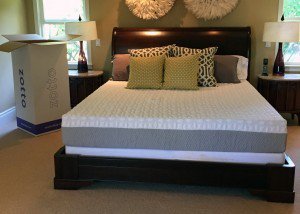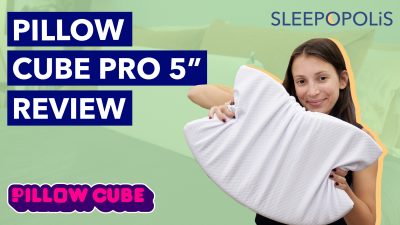 The creator of Pillow Cube (which was founded after a Kickstarter campaign) recently announced a new Kickstarter for the latest in their suite of sleep products. After turning the sleep world on its head (pun intended) with a square pillow, founder Jay Davis is back with a gadget he says will ultimately help you fall asleep faster and stay asleep longer. And if you didn’t see it coming — it’s called the Dream Machine.
The creator of Pillow Cube (which was founded after a Kickstarter campaign) recently announced a new Kickstarter for the latest in their suite of sleep products. After turning the sleep world on its head (pun intended) with a square pillow, founder Jay Davis is back with a gadget he says will ultimately help you fall asleep faster and stay asleep longer. And if you didn’t see it coming — it’s called the Dream Machine.
So, what sets the Dream Machine apart from every other device that promises better sleep? Well, this one uses artificial intelligence (AI) technology to help you catch your forty winks.
“The dream machine is different than a sleep app because it actually tells your body it’s time to sleep instead of just sending you a notification you can ignore,” says Jay Davis, founder of Pillow Cube (and now the Dream Machine). “The core idea is to get your body to respond to cues indicating that it’s time to sleep without you having to make a conscious decision.”
How Does The Dream Machine Work?
“The Dream Machine is a computer with inputs and outputs that allows us to fix three major problems people have with sleeping, falling asleep, staying asleep, and waking up in the right sleep stage,” says Davis.
Using AI technology, the system learns and understands how the user rests and optimizes their environment by making adjustments to the sound, light, temperature, and scent of the room. And just like with any machine learning tech, the more you use it, the smarter the Dream Machine gets, and the better the results.
“All the data is stored locally, so we aren’t listening to people sleep, but the onboard computer is using machine learning and AI to find the perfect environment and cues to get your body on its ideal circadian rhythm,” says Davis. “The inputs are a Bluetooth/WiFi connection to wearables, a microphone, a light sensor, and a temperature sensor. The outputs are two scent pods, a speaker, a light that simulates sunset and sunrise, and a WiFi connection to smart devices in the home.”
Ultimately, the Dream Machine gathers information (or data) on your sleep and sleep environment. Through its built-in sensors it:
- Tracks snoring and ambient noise
- Measures light in your room
- Measures temperature changes in your room
- Detects whether scent pods are on or off
As the machine collects more and more data, it then makes adjustments to these aspects of your sleep environment, optimizing and personalizing your space, all with the ultimate goal of ensuring that once you fall asleep, you stay asleep. For example, Davis notes that “There is also an option (included for free) where the Dream Machine can connect to your smart thermostat so that it can also adjust the temperature.”
The Dream Machine works with the Dream Machine app, where users can use pre-programmed sleep and wake routines (based on extensive research on optimal sleeping and waking environments) or create custom sleep routines based on individual preferences. It also has a voice control option that affords users hands-free control of the device through a built-in microphone.
Other features of the Dream Machine include:
- A sunset mode with warm lights that promote melatonin production and a sunrise mode that wakes you up by gradually increasing the lights on the base unit.
- An extensive library of sounds to help you fall asleep (and if you choose, you can wake up to those sounds in the morning as well).
- A dual aromatherapy diffuser with two separate chambers; one for dispensing a sleeping aroma and one for dispensing a waking aroma.
“We have so many temptations around us, from doomscrolling through virtually endless online content to binge-watching whatever is on Netflix, and it’s impacting our sleep in very negative ways,” says Davis. “By removing the wildcards of willpower and the weight of making good (or bad) decisions, the Dream Machine attempts to fix that. Instead, it promotes sleep in a more natural way, prompting your body to do what humans have been doing for thousands of years — naturally producing chemicals inside your body that tell you it’s time to sleep.”
Sleep and AI Used To Be Strange Bedfellows…Not Anymore
Historically, sleep studies in a clinical setting extrapolated the best information on your sleep habits and issues that only made their appearance undercover of the night. Electrodes on your head and a room full of machinery were standard fares. But you don’t need to be a neuroscientist to know that technology and access have grown by leaps and bounds in the past fifteen years or so. And with that comes a wealth of opportunities to meet people where they’re at, and in terms of sleep studies and better sleep health — they’re at home.
“We’re seeing a shift from sleep being measured in a lab to people’s homes, which generates huge datasets, says Mike Gradisar, Head of Sleep Science at Sleep Cycle AB. “Studies are now being published that show machine learning can help to increase the accuracy of detecting someone at risk of a sleep disorder — even motivating them to see their doctor so they can improve their quality of life.”



